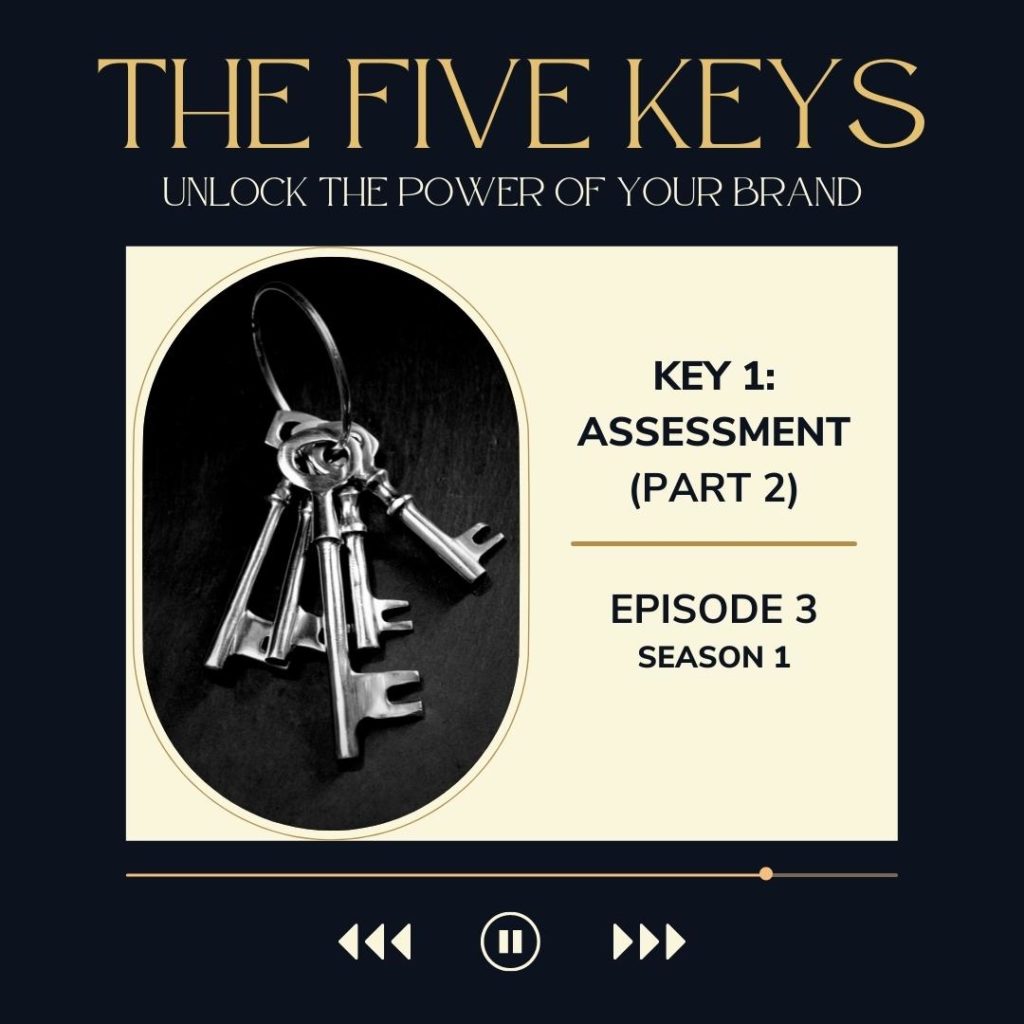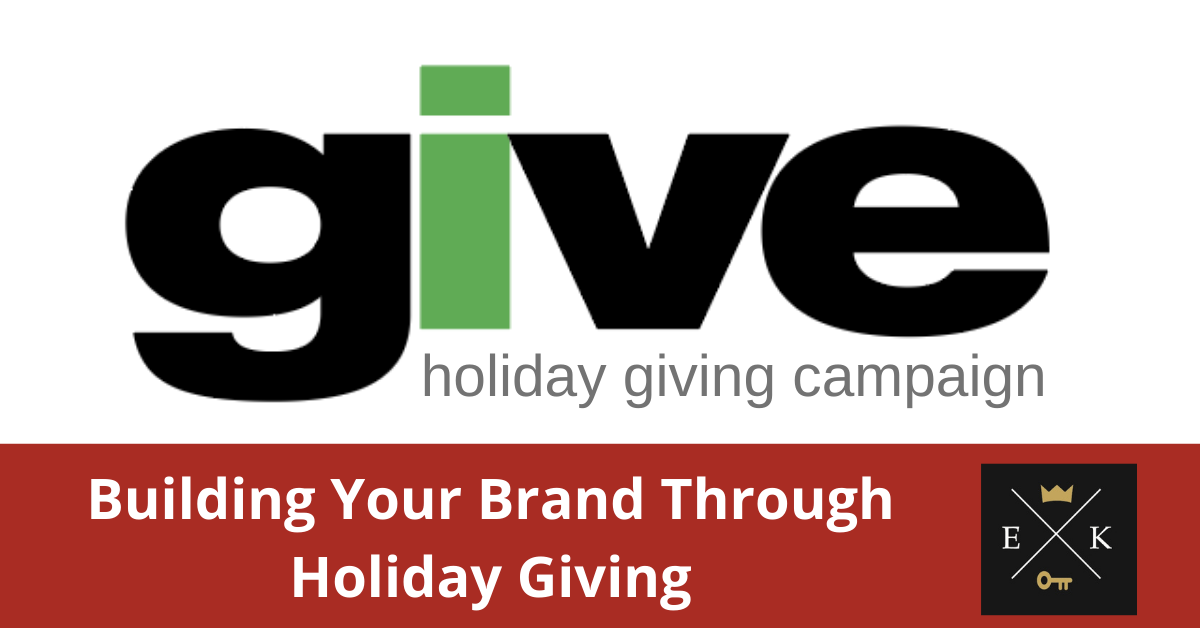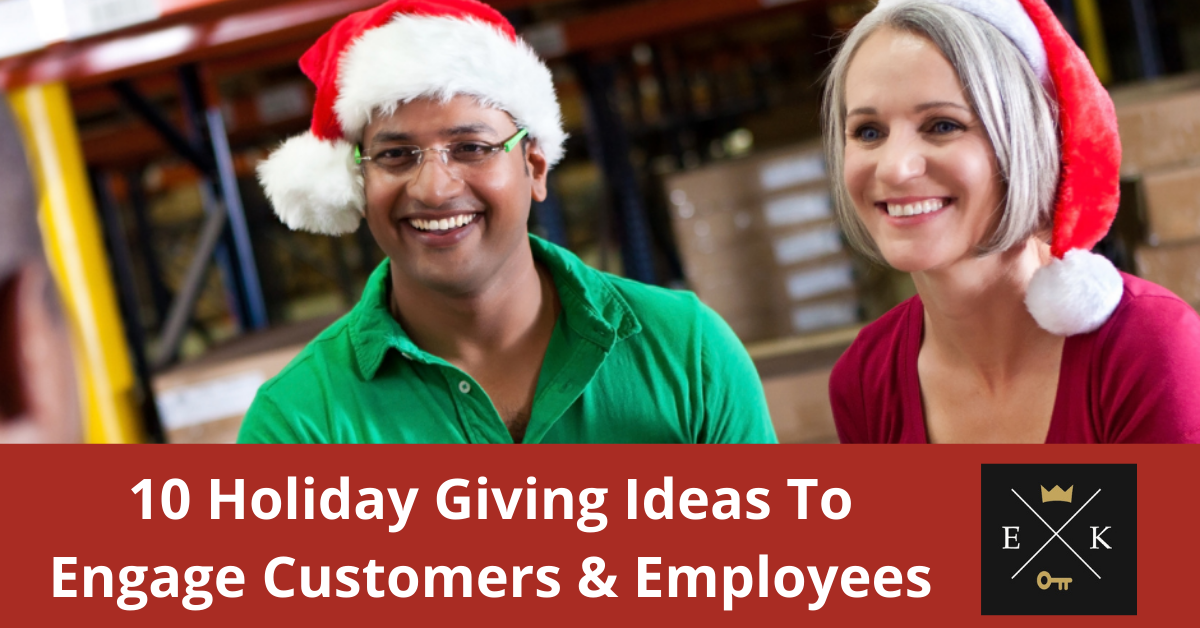In Assessment Part 2, Elizabeth King shares tools to guide you through the first key in the branding process.
Transcript:
Welcome to The Five Keys: Unlocking The Power Of Your Brand. This podcast is designed to give you the tools that you need to create a successful and dynamic brand. I’m Elizabeth King and I’m going to be your guide on this journey.
Welcome back to The Five Keys: Unlocking The Power Of Your Brand. I am Elizabeth King and I’m so happy that you’re here with us today. Last week, I talked a little bit about assessment, why it’s so important for you and why you really need to create a company identity and target your audience before you jump into actually doing the fun stuff, like creating a logo and website so you really understand who you are and who your customers are. But I also promised that I would give you some of the tools that you need to actually do it. So I want to start by talking about two mistakes that every company seems to make or that that I find entrepreneurs often make when it comes to branding. The first one is they just start by jumping into creating a logo and a website and collateral materials before they even think about who they are as a company, what their identity is.
And the second is that they’ll just start marketing without understanding who their customers are. It’s kind of like spaghetti thrown at a wall. They’ll try anything without really being smart about how they spend their marketing dollars to really target their audience. So think about brands like Nike and southwest or Harley Davidson, they spend a lot of money understanding who they are as a company and who their target audiences. But when you think about those brands, they’re iconic, but you know their story and you know who they are and you can just picture their customers. And that’s what I want for you too, when you’re creating your brand. I want you to have those same things, but you’re thinking, Elizabeth, I don’t have that kind of money. I totally get it. None of us have that money when we’re starting out. And so here’s where I want to give you some tools when you’re thinking about company identity. Let’s break assessment into two parts.
Let’s start with company identity. So what do you need? Well, first you need to figure out why you do what you do. Think about why, why you’ve started your company. Because even if you do the same thing as your competitors, your why is going to set you apart from them. And it’s really the core of your story and it’s going to attract people to you. So try to write in a sentence why you do what you do. And don’t say it’s to make money because we’re all in this to make money. That’s the first thing. Every single client I have said this to me. They say, I want to make money. I’m like, yes, I know, but why are you doing what you do? What wakes you up in the morning? Why are you so excited about this? What do you want? Polish your why.
The next is identifying your core values. So what’s important to you? You know, what are the values do you want your employees to have? What are the values that are important to making your company succeed? For me, authenticity is one of my core values. And I just want to do everything that I can to be authentic in representing who I am and conduct business with honesty and integrity. Because there are so many companies that don’t. And so that authenticity is important to me. So what’s important to you? Defining your company’s unique selling points. You’re going to have three to five things. Think of three to five things that set you apart from everybody else. Even if you’re doing the same thing as your competitors, you are going to have things that make you unique. Kind of like your why, your why is unique.
Your unique selling points, the reasons that that make you different will be unique. The second part of this is really identifying your ideal customers. I talk about ideal customers. These are your people that will take action to buy, use and promote your business. And more important than anything else. They promote your business. When you find your ideal customers, they’re the ones that are shouting from the rooftop. I love this company. You need to love this company. Those are the people that you want to attract to your business. And so one of the most important tools that I use, is I start by identifying the benefits of each product and service that somebody offers. And when you think about who needs those benefits, the most, those people that you identify are your ideal customers.
And so after you’ve got that list, it’s developing a customer profile for each one of them. And I will tell you that’s the hard part. That’s when you start thinking about who are these people, their demographics, what do they look like, what’s their income level, what their race, their age, what are they involved in? Are you targeting single moms? Are you targeting business owners? It’s going to be unique for everybody. And so think about all of those characteristics because once you understand who they are and where they are, then you can identify the communication outlets where they get their information. Is it referrals? Is it on Facebook? Do they need to see reviews? Do you need to be in the newspaper? Do you need to be on billboards?
Everything is different for each company based on where your target audience gets their information. And so that’s why it’s so important to really create personas and customer profiles for each of your ideal customers because that’s such a huge component of creating a strategy later on. So that’s what I wanted to share with you today about assessment. Creating your company identity and identifying your target audience. Once you’ve established those two things, it’s very easy to then go to your designers and start creating that logo, creating your collateral materials and your website because you know what you want to say and you know who you need to target. And so I hope that this information has helped you with those core components of your branding efforts. And I look forward to talking to you next time. I’m going to talk about goal setting because that is the second key in The Five Key process and how you align your business goals and your communication goals. So until then, I hope that you have a great week and I look forward to talking to you soon. Thanks.
Thank you for listening to The Five Keys: Unlocking The Power Of Your Brand.



